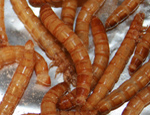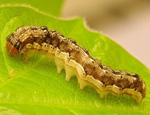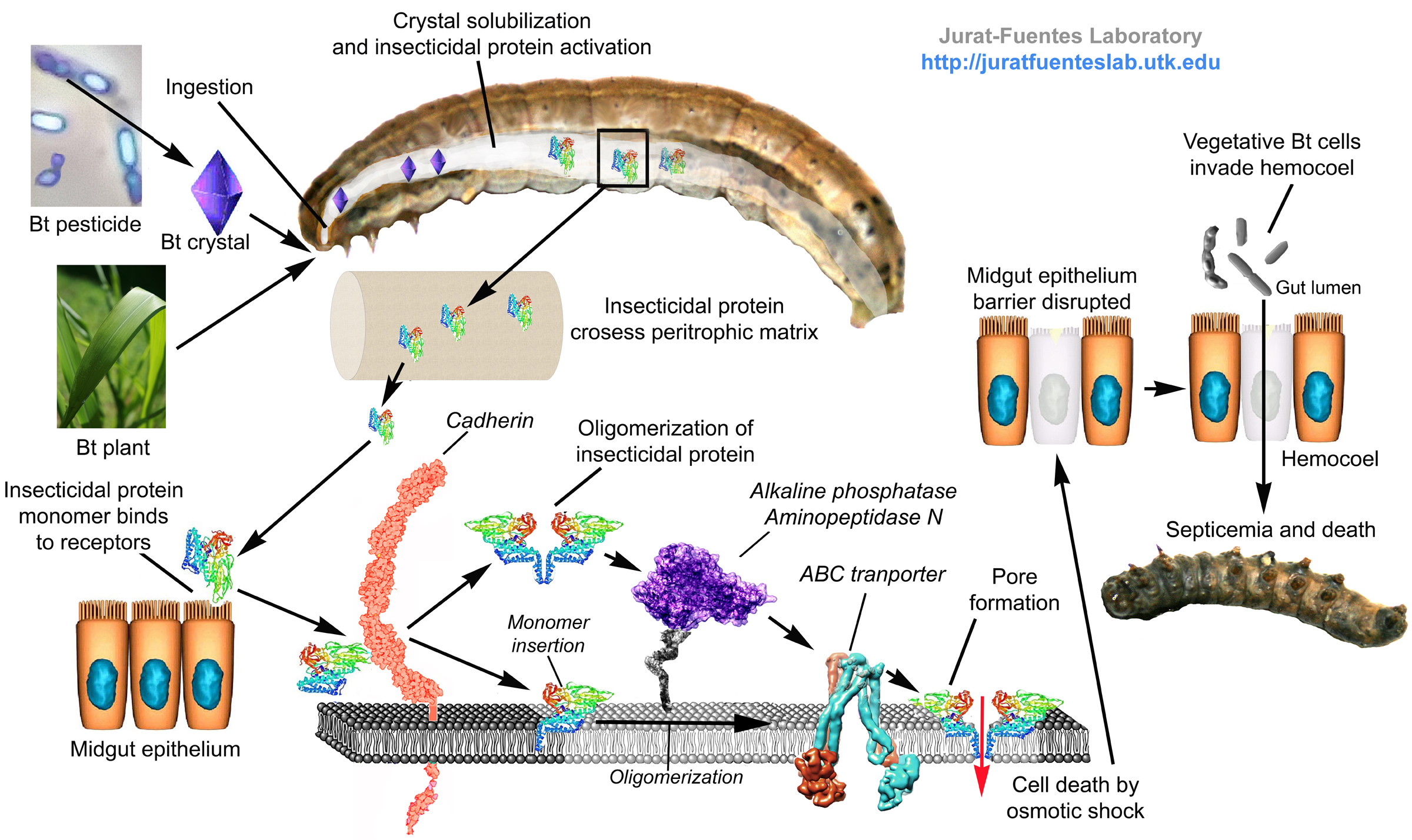| Characterization of Cry insecticidal protein mode of action | |||
What is Bacillus thuringiensis (Bt)?Bacillus thuringiensis (or Bt) is a common Gram positive, spore-forming, soil bacterium. When resources are limited, vegetative Bt cells undergo sporulation, synthesizing a protein crystal during spore formation. Proteins in these crystals are called Cry (from Crystal) endotoxins and have been known for decades to display insecticidal activity against specific insect groups. Even though insecticidal formulations based on Bt toxins have been used for many years, it was the development and commercialization of insect-resistant transgenic Bt crops expressing Cry toxins that revolutionized the history of agriculture. Benefits of this technology include high specificity and potency, reduction in chemical pesticide applications, and increased crop yield. |
 |
||
Our group is currently working on characterizing how Cry toxins kill insects. Current active areas of research in our lab related to Cry toxin mode of action include (select for more information): |
|||
 |
 |
||
How do Cry toxins work?Even though Cry toxins have been extensively used commercially, the specifics of their mode of action are still controversial. This multi-step toxicity process (see Figure below) includes ingestion of the Cry protein by a susceptible insect, solubilization, and procesing from a protoxin to an activated toxin core in the insect digestive fluid. The toxin core travels across the peritrophic matrix and binds to specific receptors called cadherins on the brush border membrane of the gut cells. Toxin binding to cadherin proteins results in activation of an oncotic cell death pathway and/or formation of toxin oligomers that bind to GPI-anchored proteins and concentrate on regions of the cell membrane called lipid rafts. Accumulation of toxin oligomers results in toxin insertion in the membrane, pore formation, osmotic cell shock, and ultimately insect death. A critical role for ATP binding cassette (ABCC) transporters in Cry intoxication is emerging, although the specific nature of the toxin-ABCC protein interaction is unknown. Whether oncosis, pore formation and/or both mechanisms are ultimately responsible for enterocyte death is still controversial. |
 |
Dr. Juan Luis Jurat-Fuentes
Department of Entomology and Plant Pathology
The University of Tennessee
370 Plant Biotechnology Building
2505 E. J. Chapman Drive
Knoxville, TN, 37996
Tel: (865) 974-5931
jurat@utk.edu
Department of Entomology and Plant Pathology
The University of Tennessee
370 Plant Biotechnology Building
2505 E. J. Chapman Drive
Knoxville, TN, 37996
Tel: (865) 974-5931
jurat@utk.edu
